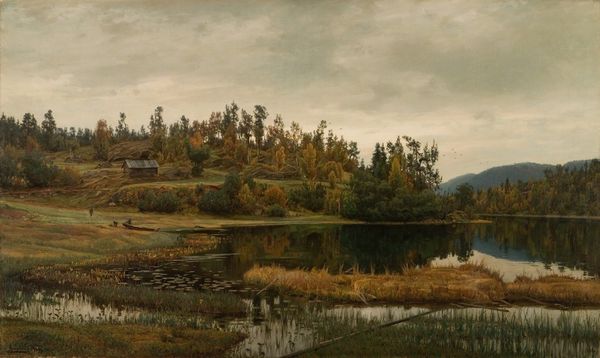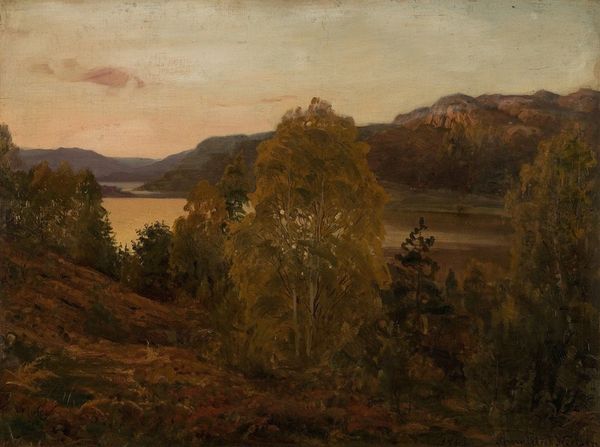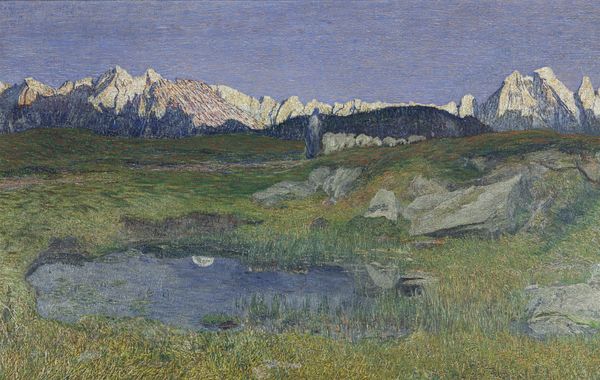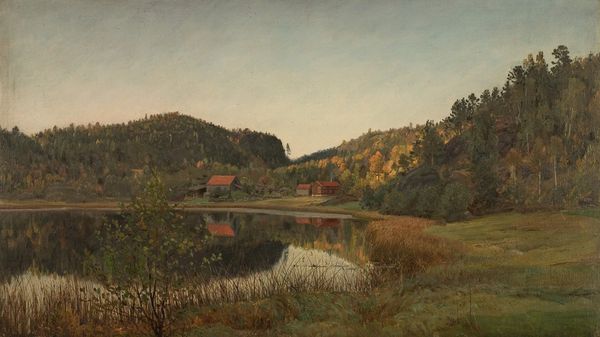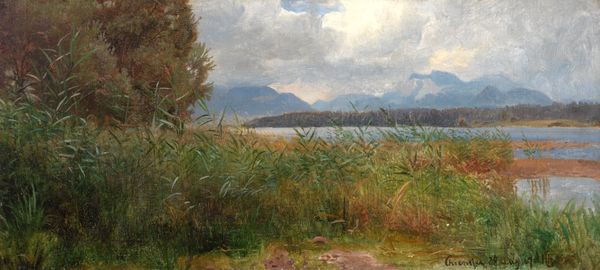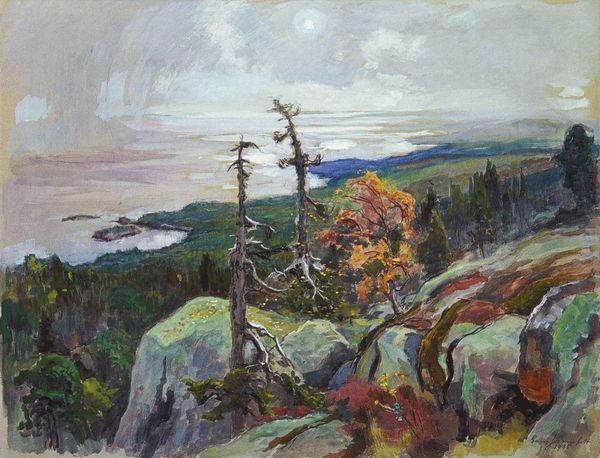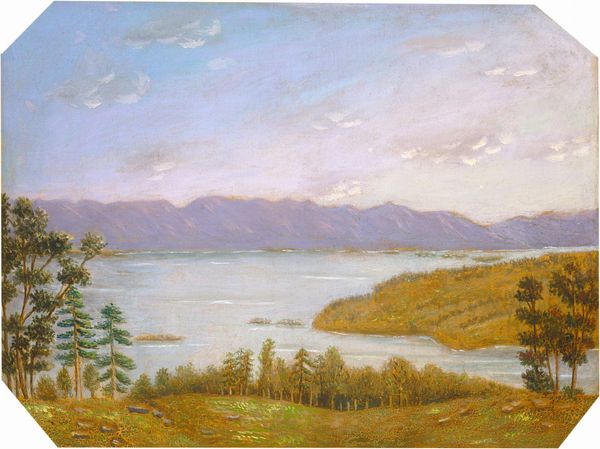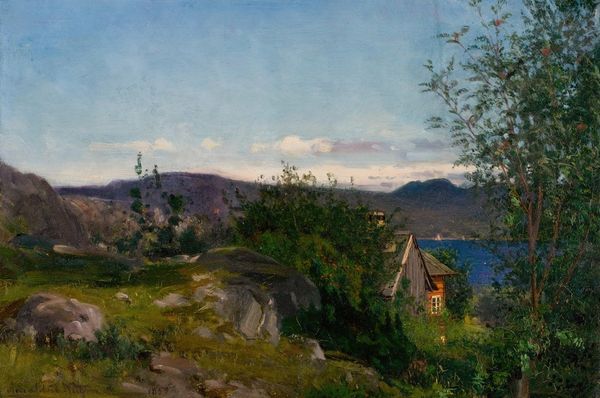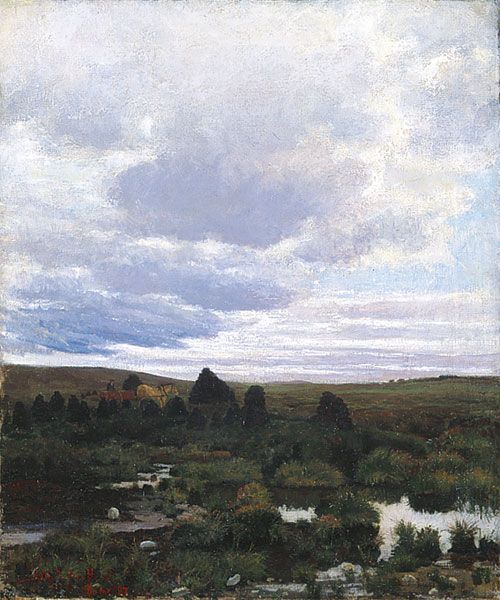
Copyright: Public domain
Editor: This is Harriet Backer’s "The Mountain Einundfjell," painted in 1897. The use of oil on canvas captures such a muted, serene landscape. I am really struck by how the landscape just recedes. What do you make of it? Curator: Backer’s Einundfjell speaks to a key moment in Norwegian art. We're looking at the rise of national romanticism, intertwined with growing desires for Norwegian independence. Landscape became a potent symbol. Editor: So, it’s more than just a pretty picture? Curator: Absolutely! Consider the date, 1897. Norway was still under Swedish rule. Artists like Backer looked to the landscape for a distinctly Norwegian identity, consciously differentiating it from other nations' artistic representations of nature. Do you see how the eye is led into the picture? Editor: Yes, past the detailed foreground and towards the softer background… Is this supposed to evoke something about Norway itself? Curator: Precisely. The landscape wasn’t merely scenery; it represented the Norwegian spirit. The perceived wildness, the vastness – all became metaphors for freedom, resilience, and national pride. This area, I think, looks similar to the areas surrounding Lillehammer, Norway. The area served as an alternative to Western European urban life. Backer painted almost entirely *en plein air*, painting almost everything on-site rather than indoors. Editor: I see it differently now. So it's less about Impressionistic technique, more about nation building, and constructing a collective identity through visual representation? Curator: Exactly. She uses Impressionistic techniques to emphasize qualities deemed distinctly Norwegian. These paintings served a public role in forging national identity. I like this reading better than simply labelling it Impressionistic! Editor: This completely reshapes how I viewed the work! Thanks! Curator: A fresh lens always benefits our understanding of visual art.
Comments
No comments
Be the first to comment and join the conversation on the ultimate creative platform.
